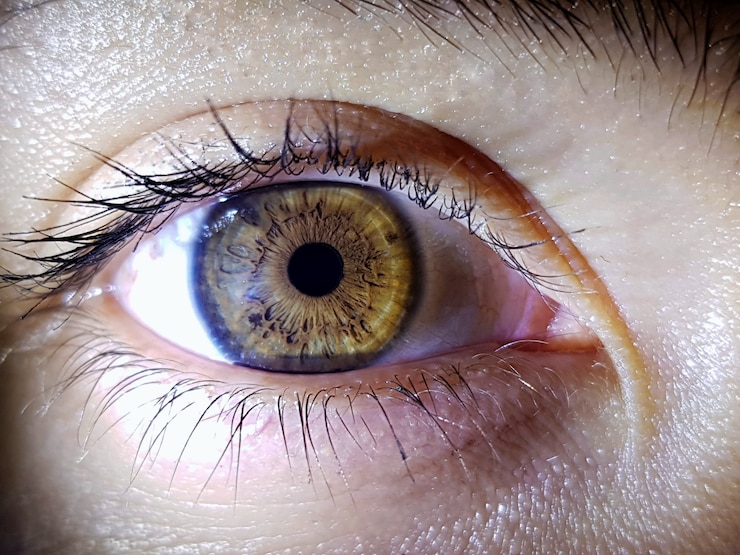
5 Common Eye Problems
Our eyesight is very valuable and is an asset. It is very important to maintain proper eye health as several problems occur in our eyes and end up disturbing our vision. Here are some common problems related to the eyes. If you find any of them relatable, immediately consult an ophthalmologist.
- Refractive Errors
Refractive errors are very common all over the world. Refractive errors include terms that are very common and known to us. Refractive errors include myopia (near-sightedness), hyperopia (far-sightedness), astigmatism (distorted vision at all distances), and presbyopia, which usually occurs between the age of 40-50 years (loss of ability to focus on close objects, read the phone book and small letters, have to hold newspapers farther to see away clearly. These can be corrected by eyeglasses, contact lenses, and in some cases eye surgeries.
- Age-Related Macular Degeneration
Macular degeneration often termed Age-Related Macular Degeneration, is a disorder that occurs usually with age and results in the damage of sharp and central vision. Central vision is required for performing the most common tasks like reading and driving. It is also needed for a clear vision. AMD affects the central part of the retina, the macula which helps to see the fine details. There are two types of AMD- wet and dry.
When an abnormal blood vessel behind the retina starts to grow under the macula, leading to leakage and blood flow, it is called Wet AMD. Bleeding, leaking, and scarring from these blood vessels cause damage and lead to rapid vision loss. A common and early symptom of wet AMD is that straight lines appear wavy.
When the macula starts thinning over time as part of ageing, it leads to blurred central vision and is thus known as Dry AMD. Dry AMD is very common, around 70-90% in AMD cases, and progresses slower than Wet AMD. Over time, the macula decreases its functions, the central vision is lost in the affected eye. Dry AMD affects both eyes. One of the common and early signs of Dry AMD is drusen.
Drusen is a tiny white or yellow deposit under the retina. This is usually seen in people above 60 years of age. The presence of small drusen does not cause vision loss, but the presence of large and more numerous drusen raises the risk of developing advanced Dry AMD or Wet AMD.
AMD can be treated through surgeries, laser therapy, vitamin B, E, carotene, zinc, copper, etc.
- Cataract
A cataract is a clouding of the eye’s lens, leading to the cause of blindness worldwide, and also a cause for the loss of vision. Cataracts can be present since birth and can occur at any age, due to various causes. Cataracts form slowly and do not cause any symptoms like pain, redness, or dry eyes.
Cataracts can be removed easily and the treatment is available worldwide, but due lack of insurance coverage, treatment cost, lack of awareness, treatment cost, and patient choices prevent people from getting the proper treatment.
- Dry Eyes
Dry eyes are very common. Most people around the world experience dry eyes. One of the main causes of dry eyes is looking into the screen for a very long period. It is the condition where the tear glands cannot produce enough tears and thus results in poor vision. Dry eyes can be irritating, itching, and sometimes also cause loss of vision. Dry eyes can occur at any stage, irrespective of all age groups.
Dry eyes are curable. If you are facing any such symptoms visit an ophthalmologist immediately. The doctor will suggest some drops and putting those drops regularly helps to cure dry eyes fast.
- Glaucoma
A glaucoma is a group of diseases that damages the optic nerve and results in the loss of vision, leading to blindness. Glaucoma is mostly inherited and shows up later in life. One cannot identify glaucoma at the initial stage, but slowly and gradually it can be noticed and felt by the person having glaucoma symptoms. Glaucoma occurs when the fluid pressure inside the eyes rises slowly. However, recent studies show that glaucoma can occur with normal eye pressure. Treatment of the eyes at the right time can prevent the eyes from serious vision loss.
- Floaters
Floaters are tiny spots that float across the field of vision. These are most common among people over 50 years old. Formed by a deposit of protein drifting about in the vitreous (the clear, jelly-like substance that fills the middle of the eye), floaters seem to drift in front of the eye but do not block vision. Usually benign, floaters sometimes can indicate a more serious eye problem such as retinal detachment, especially if they are accompanied by light flashes. If you notice a sudden change in the type or number of spots or flashes you see, visit your eye doctor as soon as possible.
These are some of the common eye problems experienced by people around the world. Most of them can be treated, and some can be prevented by taking proper care of the eyes.


